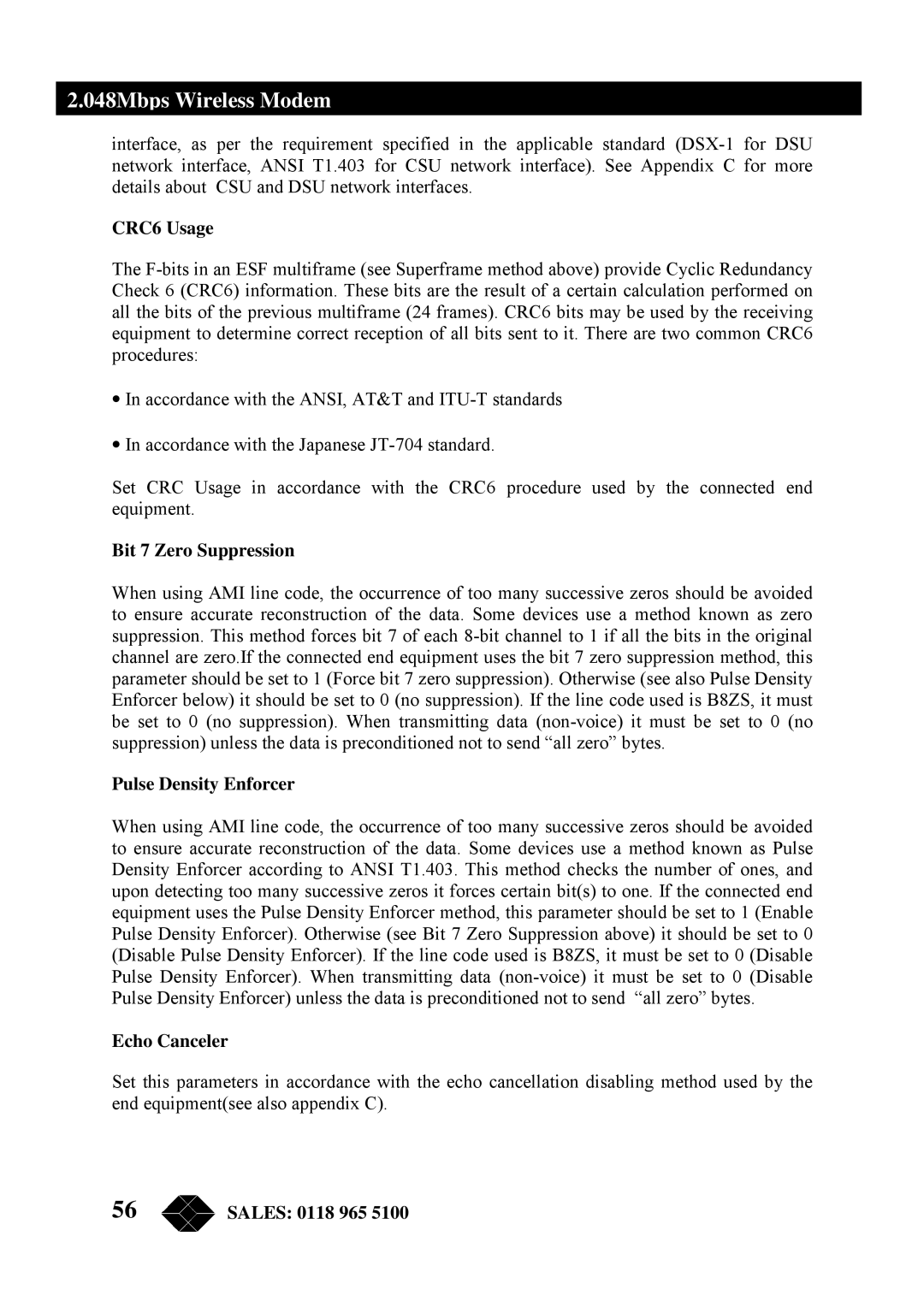
2.048Mbps Wireless Modem
interface, as per the requirement specified in the applicable standard
CRC6 Usage
The
•In accordance with the ANSI, AT&T and
•In accordance with the Japanese
Set CRC Usage in accordance with the CRC6 procedure used by the connected end equipment.
Bit 7 Zero Suppression
When using AMI line code, the occurrence of too many successive zeros should be avoided to ensure accurate reconstruction of the data. Some devices use a method known as zero suppression. This method forces bit 7 of each
Pulse Density Enforcer
When using AMI line code, the occurrence of too many successive zeros should be avoided to ensure accurate reconstruction of the data. Some devices use a method known as Pulse Density Enforcer according to ANSI T1.403. This method checks the number of ones, and upon detecting too many successive zeros it forces certain bit(s) to one. If the connected end equipment uses the Pulse Density Enforcer method, this parameter should be set to 1 (Enable Pulse Density Enforcer). Otherwise (see Bit 7 Zero Suppression above) it should be set to 0 (Disable Pulse Density Enforcer). If the line code used is B8ZS, it must be set to 0 (Disable Pulse Density Enforcer). When transmitting data
Echo Canceler
Set this parameters in accordance with the echo cancellation disabling method used by the end equipment(see also appendix C).
56 | SALES: 0118 965 5100 |
